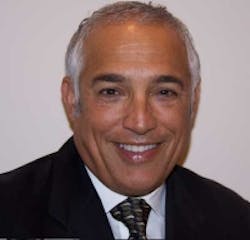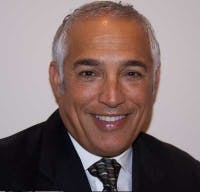Giving pediatricians the tools to complete OHRA in the pediatric practice
By Lauren Barone, MPH, Manager, Oral Health, American Academy of Pediatrics
When pediatricians and other medical professionals are conducting an oral health risk assessment (OHRA) in the primary care office, the way in which they do it needs to be fast and efficient and helpful in making decisions regarding referral, counseling, and the need to apply fluoride varnish. Although the existing dental caries assessment tools are excellent and useful in the dental office, they are too detailed for the purposes of pediatricians. To address this issue, the American Academy of Pediatrics (AAP) has been working with pediatric offices to develop practice tools to assist them in conducting an OHRA. The first program in which the AAP tested an OHRA “tool” was through the AAP’s Quality Improvement Innovation Network (QuIIN). Through the QuIIN, the AAP tested a chart sticker that queues the identification of caries risk factors and helps pediatricians to identify risk and know when to refer urgently, apply fluoride varnish, and provide behavioral/nutritional counseling. These stickers are available in English and Spanish and are on the AAP’s Web site at www.aap.org/oralhealth. As the stickers are extremely brief and do not address disease indicators or protective factors, the AAP went on to test a more robust tool for the pediatric practice through the Brightening Oral Health Project, a Bright Futures Program funded by Procter and Gamble: Live Learn Thrive. This tool includes risk factors, protective factors, physical findings, and high or low risk status. Through testing in 10 pediatric practices, the AAP has shown that this tool is effective in helping pediatricians to incorporate oral health in to their practice. The results were as follows: * 11% of practices responded that they had a system in place to document oral health risk assessment pre-intervention and 89% responded positively to this question post-intervention.* Only 11% of practices had a system in place to identify high risk patients for an oral health referral pre-intervention and 87.5% had a system in place post-intervention. * 35% of practices had a system in place to apply fluoride varnish pre-intervention and 50% had this system in place post-intervention. The AAP is continuing to test the Brightening Oral Health tool through a new quality improvement program called the Preventive Services Improvement Project. The ever-evolving tool will soon be released for use on the AAP’s Web site at www.aap.org/oralhealth. For more information regarding the AAP’s OHRA tools and children’s oral health efforts, send an e-mail to [email protected].
When pediatricians and other medical professionals are conducting an oral health risk assessment (OHRA) in the primary care office, the way in which they do it needs to be fast and efficient and helpful in making decisions regarding referral, counseling, and the need to apply fluoride varnish. Although the existing dental caries assessment tools are excellent and useful in the dental office, they are too detailed for the purposes of pediatricians. To address this issue, the American Academy of Pediatrics (AAP) has been working with pediatric offices to develop practice tools to assist them in conducting an OHRA. The first program in which the AAP tested an OHRA “tool” was through the AAP’s Quality Improvement Innovation Network (QuIIN). Through the QuIIN, the AAP tested a chart sticker that queues the identification of caries risk factors and helps pediatricians to identify risk and know when to refer urgently, apply fluoride varnish, and provide behavioral/nutritional counseling. These stickers are available in English and Spanish and are on the AAP’s Web site at www.aap.org/oralhealth. As the stickers are extremely brief and do not address disease indicators or protective factors, the AAP went on to test a more robust tool for the pediatric practice through the Brightening Oral Health Project, a Bright Futures Program funded by Procter and Gamble: Live Learn Thrive. This tool includes risk factors, protective factors, physical findings, and high or low risk status. Through testing in 10 pediatric practices, the AAP has shown that this tool is effective in helping pediatricians to incorporate oral health in to their practice. The results were as follows: * 11% of practices responded that they had a system in place to document oral health risk assessment pre-intervention and 89% responded positively to this question post-intervention.* Only 11% of practices had a system in place to identify high risk patients for an oral health referral pre-intervention and 87.5% had a system in place post-intervention. * 35% of practices had a system in place to apply fluoride varnish pre-intervention and 50% had this system in place post-intervention. The AAP is continuing to test the Brightening Oral Health tool through a new quality improvement program called the Preventive Services Improvement Project. The ever-evolving tool will soon be released for use on the AAP’s Web site at www.aap.org/oralhealth. For more information regarding the AAP’s OHRA tools and children’s oral health efforts, send an e-mail to [email protected].
Lauren Barone, MPH

